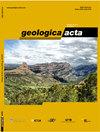西班牙东北部伊比利亚盆地上kimmeridian浅海相斜坡碳酸盐岩碳氧稳定同位素记录:不同埋藏和构造历史的印记
IF 2
4区 地球科学
Q2 GEOLOGY
引用次数: 0
摘要
古浅海碳酸盐岩的体碳和氧稳定同位素可以记录多种古环境因素的影响,也可以记录几个沉积后过程的印记,这些过程可能会改变原始海洋同位素组成。在这项研究中,对来自两个地层剖面(Tosos和Fuendetodos,目前距离15km)的大块碳酸盐、双壳钙化壳(Trisites)和方解石脉样品进行了碳和氧稳定同位素分析,分别代表近端内斜坡和远端中斜坡环境,沉积在伊比利亚盆地北部(西班牙东北部)的最上层Kimmeridian斜坡相。这些序列经历了不同的成岩途径,以不同的方式改变了每个剖面的原始海洋同位素组成。碳和氧稳定同位素特征的不同蚀变模式反映了从Kimmeridgian末期到新生代(阿尔卑斯构造抬升之后)的不同埋藏历史、构造抬升和对大气成岩作用的不同暴露。在那些主要暴露于大气成岩作用的碳酸盐岩(远中斜坡Fuendetodos剖面)中,由于沉积后构造抬升(终生作用),记录到δ13O和δ18O均显著偏离较低值。另一方面,主要受埋藏成岩作用影响的矿床(近端内斜坡Tosos剖面)相对于原始Kimmeridian海相碳酸盐岩的预期值,仅记录到较低的δ18O。由于盆地这一部分的构造演化不同,这些矿床在每个区段的埋藏和构造抬升历史不同,导致了不同程度的成岩重置。然而,尽管每个剖面中碳和氧稳定同位素特征的成岩重置不同,但这些碳酸盐在组构和阴极发光特性方面表现出相似的胶结物类型。据报道,这些碳酸盐岩的成岩重置阻止了使用δ13O和δ18O记录来处理古环境解释,而是突出了所研究的浅海碳酸盐岩序列的可变成岩叠加的有用特征,这些特征涉及其特定的沉积后历史。本文章由计算机程序翻译,如有差异,请以英文原文为准。
Carbon and oxygen stable isotope record of upper Kimmeridgian shallow-marine ramp carbonates (Iberian Basin, NE Spain): the imprint of different burial and tectonic histories
Bulk carbon and oxygen stable isotopes of ancient shallow-marine carbonates can record the effects of multiple palaeoenvironmental factors, but also the imprint of several post-depositional processes, which may alter the original marine isotopic composition. In this study, carbon and oxygen stable isotope analyses were performed on bulk carbonate, bivalve calcitic-shell (Trichites) and calcite vein samples from two stratigraphic sections (Tosos and Fuendetodos, present-day distance 15km), representing proximal inner- and distal mid-ramp environments, respectively, of the uppermost Kimmeridgian ramp facies deposited in the northern Iberian Basin (NE Spain). These successions underwent different diagenetic pathways that altered the primary marine isotopic composition in each section in different ways. Different burial histories, tectonic uplift and a variable exposure to meteoric diagenesis from the end of the Kimmeridgian to the Cenozoic (following Alpine tectonic uplift) are reflected in the different alteration patterns of the carbon and oxygen stable isotope signatures. A significant deviation to lower values in both δ13O and δ18O is recorded in those carbonates mostly exposed to meteoric diagenesis (distal mid-ramp Fuendetodos section), because of post-depositional tectonic uplift (telogenesis). On the other hand, the deposits mainly affected by burial diagenesis (proximal inner-ramp Tosos section) only record low δ18O with respect to expected values for pristine Kimmeridgian marine carbonates. The different burial and tectonic uplift histories of these deposits in each sector, due to their different tectonic evolution in this part of the basin, resulted in a variable degree of diagenetic resetting. However, in spite of the different diagenetic resetting reported of the carbon and oxygen stable isotope signatures in each section, these carbonates show similar cement types in termsof fabrics and cathodoluminescence properties. The diagenetic resetting reported for these carbonates prevents the use of the δ13O and δ18O records for addressing palaeoenvironmental interpretations, but instead highlights useful features regarding the variable diagenetic overprint of the studied shallow-marine carbonate successions concerning their specific post-depositional history.
求助全文
通过发布文献求助,成功后即可免费获取论文全文。
去求助
来源期刊

Geologica Acta
地学-地质学
CiteScore
2.50
自引率
6.70%
发文量
13
审稿时长
>12 weeks
期刊介绍:
- Relevant conceptual developments in any area of the Earth Sciences.
- Studies presenting regional synthesis.
- Thematic issues or monographic volumes presenting the results from one or more research groups.
- Short papers reflecting interesting results or works in progress.
- Contributions and results from Research Projects, Workshops, Symposiums, Congresses and any relevant scientific activity related to Earth Sciences.
- Geologica Acta aims to stimulate rapid diffusion of results and efficient exchange of ideas between the widespread communities of Earth Science researchers (with special emphasis on Latinamerica, the Caribbean, Europe, the Mediterranean
 求助内容:
求助内容: 应助结果提醒方式:
应助结果提醒方式:


